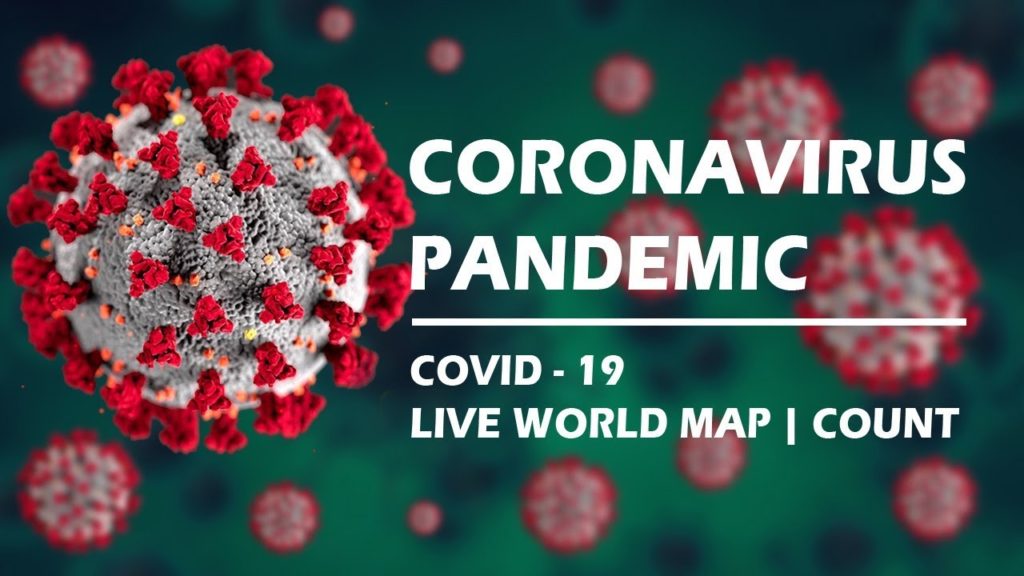National Updates
The CDC has added six new warning signs of COVID-19. The new symptoms are: chills, repeated shaking with chills, muscle pain, headache, sore throat, new loss of taste or smell.
Source: https://www.cdc.gov/coronavirus/2019-ncov/symptoms-testing/symptoms.html
COVID-19 may be causing sudden strokes in adults under 50. Doctors recommend calling for an ambulance if you experience stroke symptoms as the condition could be related.
Source: https://www.cnn.com/2020/04/22/health/strokes-coronavirus-young-adults/index.html
According to the CDC, face coverings or masks should not be used on young children under 2 years old or anyone who has trouble breathing.
Source: https://www.cdc.gov/coronavirus/2019-ncov/prevent-getting-sick/prevention.html
Recent guidelines from the White House on reopening the country include 3 phases, starting with a 14-day period of reduced flu-like illnesses, COVID-19 cases, and hospital overcrowding.
Source: https://www.whitehouse.gov/openingamerica/
Medical experts suggest that patients in need of prescription medication stock up with at least a 30-day supply on hand during shelter-in-place, or in case of self-isolation.
Frequently Asked Questions
u003cstrongu003eHow to protect yourselfu003c/strongu003e
u003cstrongu003eSocial distancingu003c/strongu003e. The virus spreads person-to-person. The CDC estimates that 6 feet is a safe distance from someone who may be infected.u003cbru003eu003cbru003eu003cstrongu003eWash your handsu003c/strongu003e. This is still commonly considered as some of the easiest armor against the virus. Wash your hands with warm, soapy water for at least 20 seconds.u003cbru003eu003cbru003eHand sanitizer made of at least 60% alcohol is an acceptable alternative to soap and water.u003cbru003eu003cbru003eu003cstrongu003eAvoid touching your eyes, nose, and mouth with unwashed handsu003c/strongu003e.u003cbru003eu003cbru003eu003cstrongu003eClean and disinfect commonly used surfacesu003c/strongu003e. Diluted household bleach solutions and solutions with 70% alcohol are ideal for disinfecting surfaces.u003cbru003eu003cbru003eSource: u003ca rel=u0022noreferrer noopeneru0022 href=u0022https://www.cdc.gov/coronavirus/2019-ncov/prepare/disinfecting-your-home.htmlu0022 target=u0022_blanku0022u003ehttps://www.cdc.gov/coronavirus/2019-ncov/prepare/disinfecting-your-home.html u003c/au003eu003cbru003eu003cbru003eu003cstrongu003eResponding to public health crises can have a detrimental effect on mental healthu003c/strongu003e. The CDC recommends limiting consumption of media coverage about the disease and focusing on self-care activities at home.u003cbru003eu003cbru003eSource: u003ca rel=u0022noreferrer noopeneru0022 href=u0022https://www.cdc.gov/coronavirus/2019-ncov/prepare/managing-stress-anxiety.htmlu0022 target=u0022_blanku0022u003ehttps://www.cdc.gov/coronavirus/2019-ncov/prepare/managing-stress-anxiety.htmlu003c/au003e
How to protect others
u003cstrongu003eStay home if you are sicku003c/strongu003e. Unless medical care is needed, the safest way to protect others is to stay home.u003cbru003eu003cbru003eu003cstrongu003eCover coughs and sneezesu003c/strongu003e. Cough and sneeze into your elbow, to prevent any particles transferring to another person through touch.u003cbru003eu003cbru003eu003cstrongu003eWash your handsu003c/strongu003e. Use warm, soapy water, and wash for at least 20 seconds.u003cbru003eu003cbru003eu003cstrongu003eWear cloth face coverings in public settingsu003c/strongu003e. Especially in places like grocery stores and other communal areas where it is hard to maintain social distancing.u003cbru003eu003cbru003eRecent studies have shown that coronavirus patients can be asymptomatic (lack any symptoms of the disease), so face coverings are important.u003cbru003eu003cbru003eSource: u003ca rel=u0022noreferrer noopeneru0022 href=u0022https://www.livescience.com/cdc-recommends-face-masks-coronavirus.htmlu0022 target=u0022_blanku0022u003ehttps://www.livescience.com/cdc-recommends-face-masks-coronavirus.htmlu003c/au003eu003cbru003eu003cbru003eu003cstrongu003eUse non contact methods of greeting, rather than handshaking to prevent spread of virusu003c/strongu003e.u003cbru003eu003cbru003eSource: u003ca href=u0022https://www.cdc.gov/coronavirus/2019-ncov/downloads/workplace-school-and-home-guidance.pdfu0022u003ehttps://www.cdc.gov/coronavirus/2019-ncov/downloads/workplace-school-and-home-guidance.pdfu003c/au003e
Tips for your home
u003cstrongu003eIncrease the ventilation in your home or place of work by opening windows or adjusting air conditioningu003c/strongu003eu003cbru003eu003cstrongu003eDisinfect surfaces like doorknobs, tables, and handrails regularlyu003c/strongu003eu003cbru003eu003cbru003eSource: u003ca rel=u0022noreferrer noopeneru0022 href=u0022https://www.cdc.gov/coronavirus/2019-ncov/downloads/workplace-school-and-home-guidance.pdfu0022 target=u0022_blanku0022u003ehttps://www.cdc.gov/coronavirus/2019-ncov/downloads/workplace-school-and-home-guidance.pdfu003c/au003e
What are the symptoms?
u003cemu003eSymptoms may not appear for up to two weeks. If you feel you may have been exposed, please exercise caution when considering leaving home. u003c/emu003eu003cbru003eu003cbru003e- Feveru003cbru003e- Coughu003cbru003e- Shortness of breath
Who is most at risk?
– Older Adultsu003cbru003e- People with underlying health conditions (heart disease, diabetes, lung disease)
Where can I find more information?
We have many helpful articles below that have been tracking the COVID-19 pandemic. You can also find more information about how to stay safe in this unprecedented time at u003ca rel=u0022noreferrer noopeneru0022 href=u0022https://www.cdc.gov/coronavirus/2019-nCoV/index.htmlu0022 target=u0022_blanku0022u003ehttps://www.cdc.gov/coronavirus/2019-nCoV/index.htmlu003c/au003e
Coronavirus Topics: Coming Soon

Coronavirus Update (Live)
Actual information: https://www.worldometers.info/coronavirus/

